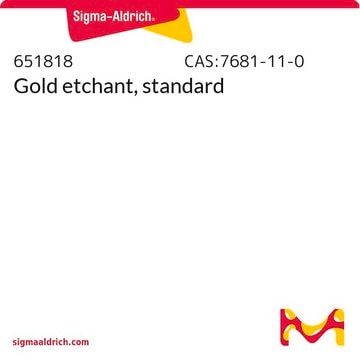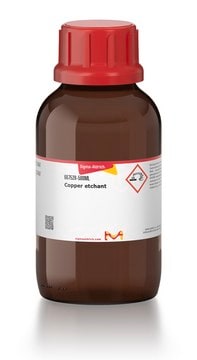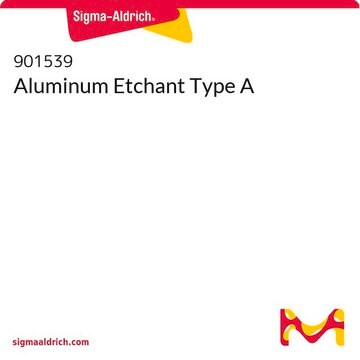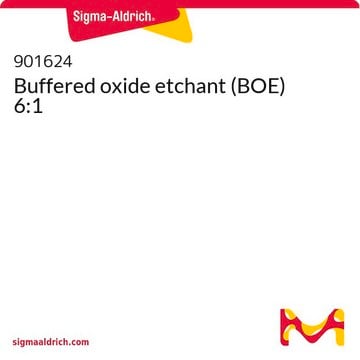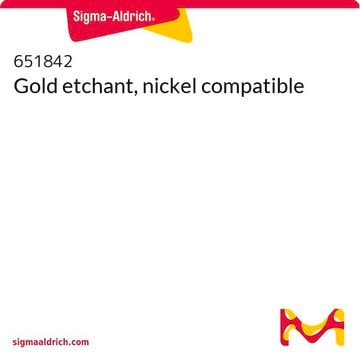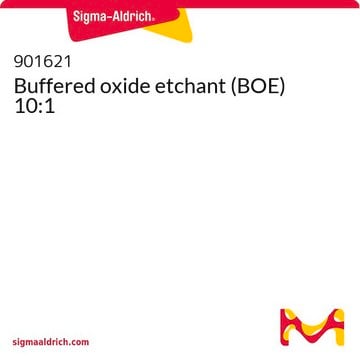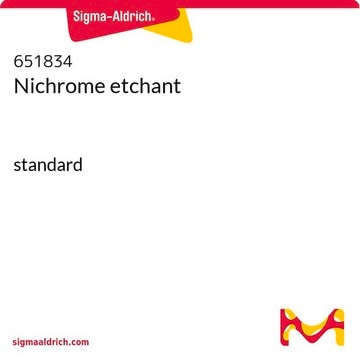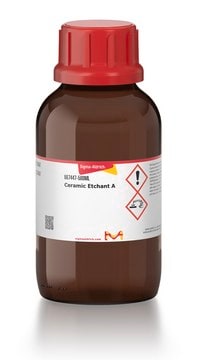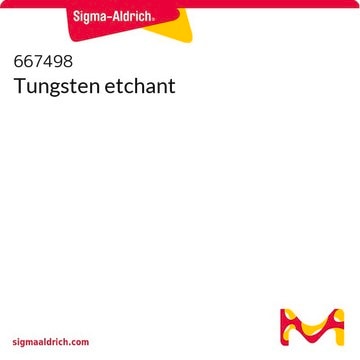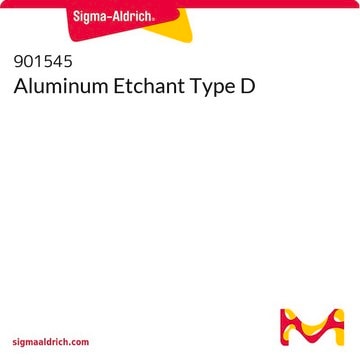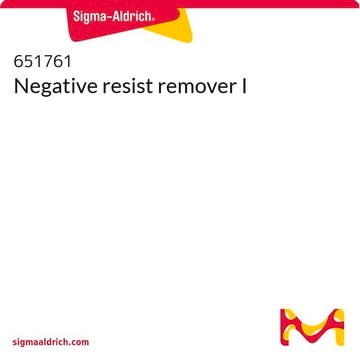651826
Chromium etchant
standard
Synonyme(s) :
Cr etching solution
About This Item
Produits recommandés
Qualité
standard
Composition
volatiles, 85%
Couleur
orange
Point d'ébullition
100 °C/1 atm
Densité
1.16 g/mL at 25 °C
Description générale
- Appearance - Clear orange
- pH - Acidic
- Etch Rate at 40 °C - 40 Å/second
- Etch Capacity (rate declines at ~70%) - 65 g/gallon
- Shelf Life - 1 year
- Storage Conditions - Ambient
- Filtration - 0.2 µm
- Recommended Operating Temperatures - 20-80 °C (30-40 °C most common)
- Rinse - Deionized water
- Photoresist Recommendations - KLT6000 Series, KLT 5300 Series, HARE SQT (SU-8 type), TRANSIST, or PKP -308PI
- Select Compatible Materials - Au, Ti, oxide, nitride, Si
- Select Incompatible Materials - Al, Ni, Cu, NiCr
- Compatible Plastics - HDPE, PP, PTFE, PFA, PVC
- Isotropy - Isotropic
- Incompatible Chemicals - Strong bases
Application
Caractéristiques et avantages
Mention d'avertissement
Danger
Mentions de danger
Conseils de prudence
Classification des risques
Aquatic Chronic 2 - Eye Dam. 1 - Met. Corr. 1 - Ox. Liq. 2 - Skin Corr. 1B - Skin Sens. 1
Risques supp
Code de la classe de stockage
5.1B - Oxidizing hazardous materials
Classe de danger pour l'eau (WGK)
WGK 3
Point d'éclair (°F)
Not applicable
Point d'éclair (°C)
Not applicable
Certificats d'analyse (COA)
Recherchez un Certificats d'analyse (COA) en saisissant le numéro de lot du produit. Les numéros de lot figurent sur l'étiquette du produit après les mots "Lot" ou "Batch".
Déjà en possession de ce produit ?
Retrouvez la documentation relative aux produits que vous avez récemment achetés dans la Bibliothèque de documents.
Les clients ont également consulté
Protocoles
Photoresist kit offers pre-weighed chemical components for lithographic processes, with separate etchants for various substrate choices.
Photoresist kit offers pre-weighed chemical components for lithographic processes, with separate etchants for various substrate choices.
Photoresist kit offers pre-weighed chemical components for lithographic processes, with separate etchants for various substrate choices.
Photoresist kit offers pre-weighed chemical components for lithographic processes, with separate etchants for various substrate choices.
Notre équipe de scientifiques dispose d'une expérience dans tous les secteurs de la recherche, notamment en sciences de la vie, science des matériaux, synthèse chimique, chromatographie, analyse et dans de nombreux autres domaines..
Contacter notre Service technique